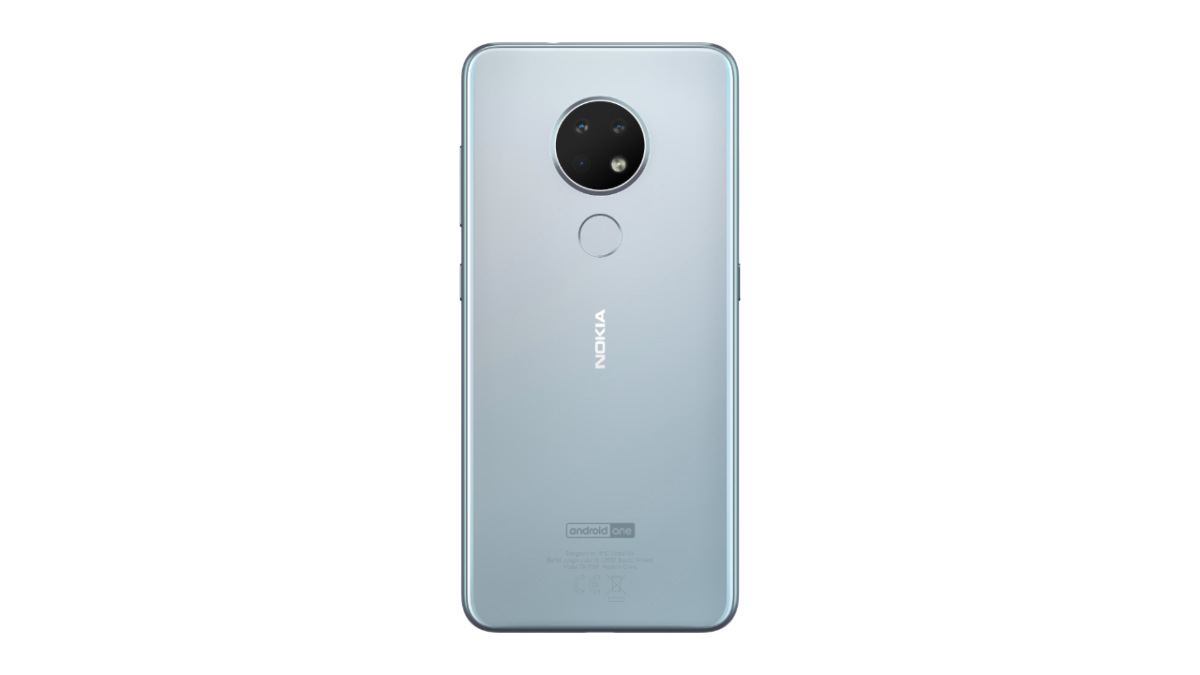Nokia 6.2: A Mid-Range Masterpiece with Pure Display & Triple Cameras
Table of Contents
Introduction
Launched in 2019, the Nokia 6.2 was a solid entrant in the budget-to-midrange Android market. With a sleek design, triple rear cameras, PureDisplay technology, and the promise of a clean Android experience, it catered to users who prioritized build quality and software simplicity.
Now in 2025, the question remains: Does the Nokia 6.2 still hold value in a world of 120Hz OLEDs and AI-powered flagships? Let’s revisit what made this phone stand out—and whether it can still serve today’s users.
PureDisplay & Design: Clean, Bright, and Durable
At the heart of the Nokia 6.2 is a 6.3-inch Full HD+ PureDisplay, protected by Corning® Gorilla™ Glass 3. When it launched, PureDisplay brought real-time SDR to HDR conversion, improving contrast and color vibrancy. While newer phones now offer higher refresh rates, the Nokia 6.2 still provides a crisp, color-accurate viewing experience that’s very respectable.
Its design is another highlight:
- Premium build quality with a composite frame and glass back
- Sleek 8.25 mm profile
- Weighs just 180g—light by today’s standards
- Available in Ice and Black
If you want a phone that still feels premium in hand, the Nokia 6.2 delivers.
Triple Camera Setup: Versatility in a Budget Phone
The 16 MP main sensor, paired with a 5 MP depth sensor and 8 MP ultra-wide lens, made the Nokia 6.2 a triple-camera rarity in its price bracket back in 2019.
While it lacks today’s computational photography tricks, it still offers:
- Decent daylight photography
- Live Bokeh depth control
- Wide-angle shots that beat many current entry-level phones
- A front 8 MP selfie camera that’s ideal for video calls and casual social media
Its rear LED flash and AI-driven image enhancements were surprisingly good for the time—and still serviceable for everyday shots today.
2-Day Battery Life: Still Competitive
Powered by a 3,500 mAh battery, the Nokia 6.2 was marketed as a 2-day device—and that claim wasn’t exaggerated. Even now, paired with its efficient Snapdragon™ 636 processor and stock Android OS, the phone manages excellent standby and moderate usage endurance.
Charging remains modest at 5V/2A via USB-C, which is slow by 2025 standards, but adequate if overnight charging is your norm.
Performance & Software: Stock Android for the Win
Equipped with a Snapdragon 636 chipset and up to 4GB RAM, the Nokia 6.2 was never about blazing-fast performance. But its real strength was in the Android One program—meaning:
- No bloatware
- Faster security patches (until support ended)
- Clean, ad-free user experience
In 2025, it still handles calls, messaging, social apps, and lightweight multitasking smoothly. However, it will feel limited with demanding games or newer AI-heavy apps.
Storage Options:
- 32GB / 64GB / 128GB internal
- Expandable up to 512GB via microSD
Perfect for offline media storage or casual users with large photo libraries.
See Also: Built Like a Tank: Nokia 6.1’s Legacy of Strength and Simplicity
Connectivity & Extras
The Nokia 6.2 is still feature-packed for a 2019 device:
- 3.5mm headphone jack
- Bluetooth 5.0
- FM radio (headset required)
- Qualcomm aptX audio support
- Dual microphones for clearer calls
- USB Type-C for modern charging
Bonus? It comes with a dedicated Google Assistant button, which, while underused today, was a smart convenience at the time.
In the Box
You’ll find:
- Headset
- USB Type-C Cable
- Charger
- SIM ejector tool
- Quick Start Guide
Minimal packaging, but practical.
Is It Worth It in 2025?
If you’re looking for:
- A budget backup phone
- A device for light users (seniors, kids)
- Something with stock Android and expandable storage
- Or a collector piece from Nokia’s Android revival years
…then the Nokia 6.2 still has value.
However, for power users, gamers, or those needing camera AI magic, modern budget devices in the same price range may offer more future-ready features.
Final Verdict
The Nokia 6.2 remains a symbol of what made Nokia’s Android phones great—durable build, clean UI, reliable battery, and smart features for less.
It may not match 2025’s mid-range monsters on raw specs, but for what it offers—especially in refurbished markets—it’s a nostalgic and functional mid-range masterpiece.
CTA:
Thinking of exploring more from Nokia’s lineup or curious about modern budget phones that carry its legacy forward?
👉 Visit iTMunch for more reviews





